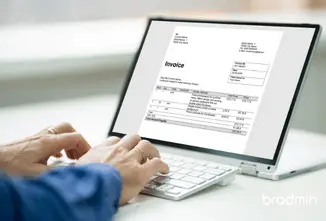Providing your clients with a grace period of credit until their next payment is due could be one of the most efficient tools to increase sales and growth figures.
Credit control is a vital method adopted by almost every business out there, big or small, to maintain a long-lasting relationship with their customers.
Nonetheless, it does hold varying levels of risk, as the financial wellbeing of your business and its ability to sustain a profitable operation may depend on clients making their payments on time.
When it comes to late payments, the implications and risks to your business are pretty evident. Particularly for SMEs, the ability to invest funds back into the business, promote services or goods and increase the business’s workforce may drop considerably.
According to SideTrade’s invoice tracker, [1] the rate of unpaid invoices issued in the UK has shot through the roof throughout the pandemic. In June 2020, a staggering 58%!! of all invoices were not paid.
Albeit, research done by Pay.UK [2] back in 2019 proves that the Coronavirus pandemic wasn’t the trigger for the late payments phenomenon. It was simply projecting a massive spotlight on a long-lasting situation preceding the pandemic.
In light of the cash flow challenges, many businesses have to overcome, adopting a clear credit control policy and implementing a few best practices is crucial for long-term financial sustainability.
These necessary routines should help you get on top of the client’s debt and some unwanted delays in monthly payments.
First, get organised and log everything!
In some cases, mismanagement of clients’ debt isn’t always about your clients. Sometimes it is about us and the working procedures we have implemented internally.
Imagine having a call with a new customer about an outstanding payment, only to find out that the first invoice was already paid or, far worse, the client was granted a full refund by the support team.
Urgggg… you’d probably wish you haven’t picked up the phone in the first place.
So, whether it’s by keeping a log of each communication you had with the client or by creating a set process for chasing unpaid invoices, having an ‘organised desk’ would make your life a lot easier and far less awkward.
Research payment history
Particularly with SMEs, it is worthwhile checking that a potential new client doesn’t have a bad history of late payments, complaints or penalties issued against their business.
A quick online check could save you the frustration of chasing debtors.
Agree on payment terms in advance
Whether you sell your product online or negotiate the conditions of your service face to face, making sure both you and your clients have a clear understanding of the scope of work and the terms of credit provided; is critical.
Minimising confusion on both ends helps limit delayed payments and establish the foundations of mutual trust between yourself and your clients/business partners.
Offer incentives to early payers
One of the most popular payment structures offered by privately owned or governmental organisations these days is an annual billing plan. The consumer gets a significant discount for making a yearly payment in advance instead of being charged a higher rate every month.
Once again, this pricing tactic could substantially reduce the risk of late payments and chasing debtors. Still, it also holds the potential of attracting a more financially reliable clientele that has the means to make a long-term commitment to your service or product.
Automate invoicing
Sending invoices early and on time is quite an obvious task. However, it can be easily mismanaged without a suitable invoicing system or accounting software to support you and your staff. Utilising technology and automation can seriously reduce unnecessary errors.
These days, many accounting software should allow you to quickly schedule emailed invoices and reschedule payment reminders sent to clients.
Furthermore, especially with new clients, it is helpful to follow up on any invoice sent and check that it was received by the right person and didn’t slip through the cracks.
Machine learning based on artificial intelligence (AI) is transforming the credit-control domain with new abilities to predict consumers billing behaviour. In their recent behavioural experiment, Appel, Oliveira, Lima, Malfatti, de santana and de Paula [3] have created an algorithmic model which allows businesses to rank and categorise clients by their future probability to miss a payment.
” We built a model that computes the probability score of an invoice being overdue in the context of AR (account receivables) practices. This is critical when dealing with a large set of invoices, which in turn requires collectors to rank customers and focus on those more likely to be delinquent.
Our results are significant, with an accuracy of up to 77%. The model developed in our work will be able to help our client attain a better sense of its ar operations and take better actions, thus improving its cash flow.”
Monitor client relationship
Although ignored by many, one of the main contributors to late payments is client relationship. Put in simple terms; happy clients tend to have fewer debt issues.
In 2017, Sualihu, Rahman and Tofik-Abu [4] found that the level of customer satisfaction and perceived service value seemed to be correlated with the late payment behaviour of local consumers in Ghana.
“Customer satisfaction in this study is conceptualised as an outcome of the influences of other predictor variables, which in turn is expected to affect customers’ behavioural intentions as reflected in their decisions to pay water bills on time.”
Don’t apologise!
Most of us don’t like making late payment calls. It is being considered as a task that makes us move uncomfortably in our seats.
Still, handling these calls with assertiveness and confidence proves to be a vital element in engaging with debtors.
Whether you decide to outsource these conversations to an external debt collector or delegate them to a dedicated member of staff, a polite, non-apologetic tone is essential.
Be ready to escalate
Despite your goodwill and patience, when an invoice remains unpaid, there are some measures you should consider to recover any funds owed to you.
Be ready to halt the service provided until the payment is delivered or notify the client that additional interest will be applied to the remaining balance.
Be sensible and flexible in particular circumstances
There are occasions when loyal, good customers struggle to keep up with payments. This shift in billing behaviour may be related to personal hardship in their lives or current, turbulent conditions in their market affecting their business operation.
It may be that some degree of flexibility and sensitivity will be expected from you as their business partner. Try to maintain an active communication channel with the client and establish an accurate perception of their current financial or personal circumstances.
Conclusion
Beyond the technical elements of an effective credit control policy, it also essential for you to look at your business through a broader prism. Applying both stringent and flexible billing restrictions across the various stages of a customer’s lifetime is key. But you are also taking necessary creative steps to minimise the adverse effects on both client’s relationship and cash flow.
Finally, this article serves as an informative piece of content, and you should treat it as such. It cannot replace the professional advice of an accountant or other financial advisors.
If you start as a sole trader or think about incorporating a new company, it is always wise to seek initial advice and plan ahead.





![Apology letter for late payment to supplier [with examples] 5 apology letter for late payment to supplier](https://brodmin.com/wp-content/uploads/2021/09/apology-letter-for-late-payment-to-supplier.webp)
![Invoice payment terms - UK edition 2022 [+ Net calculator] 6 Invoice Payment Terms UK Edition 2021](https://brodmin.com/wp-content/uploads/2021/09/Invoice-Payment-Terms-UK-Edition-2021.webp)





